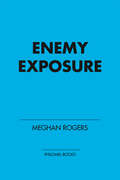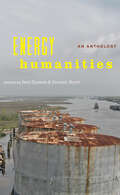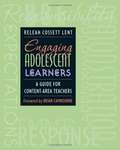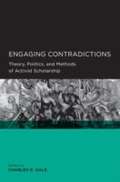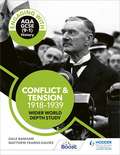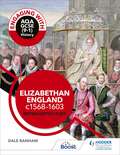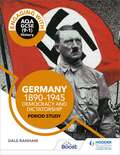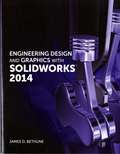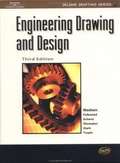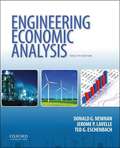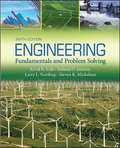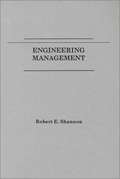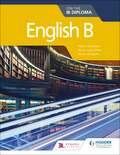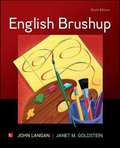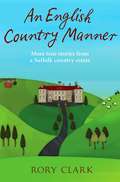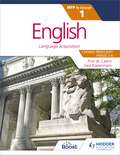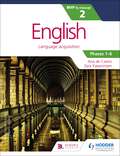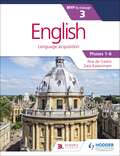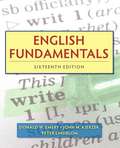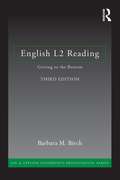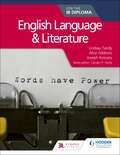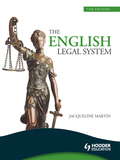- Table View
- List View
Enemy Exposure (The Raven Files #2)
by Meghan RogersA spy and action thriller featuring a teenage girl who kicks butt and outsmarts with the best of them. To accomplish her mission, though, she'll need to team up with those she trusts the least in this latest Raven File case.Jocelyn Steely (code name: Raven) may have escaped the clutches of KATO and won the trust of the IDA, but she isn&’t out of danger yet. Her cover is blown and KATO agents are after her, but that won&’t stop Jocelyn. After all, her goal was never merely to escape KATO. She wants revenge.Dead set on rescuing the one girl that she—and the IDA—failed to save, Jocelyn is forced to recruit other KATO agents to her side. She must hand over just enough intelligence to gain their trust, while still preventing her plans from getting back to her former tormentors. Is she out of her league in this battle? Or does she have what it takes to derail KATO once and for all? This high-stakes spy thriller will have readers on the edge of their seats until the final mind-blowing revelation.Praise for Enemy Exposure:"Joss' latest mission is filled with well-paced intrigue, making for a suspenseful page-turner."—Kirkus Reviews"Purchase . . . for collections needing more awesome spy girl stories."—School Library JournalPraise for Crossing the Line: &“Jocelyn makes for a kick-ass, determined heroine, and there&’s no shortage of scenes of adrenaline-charged adventure . . . [A] strong debut for both the author and the Raven Files series.&”—Publishers Weekly &“There&’s a plot twist, revealed secret, or chase scene in every chapter—Rogers knows how to keep the pages turning. . . . The cliff-hanger ending begs for a swift sequel.&”—Booklist &“For fans of TV&’s Alias, this is the beginning of an excellent new espionage series.&”—School Library Journal
Energy and the Environment: Sources, Technologies, and Impacts
by Reza ToossiEnergy and the Environment is conceived and written at a level suitable for use as an introductory undergraduate textbook in energy and environment for students with very little mathematics or science background. It can also be used by anyone interested in technical, political, environmental, and economical issues related to energy. To make the text appropriate for engineering and science students, additional topics are included within information boxes placed throughout the book, and in the appendices. Examples requiring algebra are indicated in a similar manner. Depending on the audience, instructors can decide to eliminate all or part of this material without loss of continuity. Each chapter in Energy and the Environment stands alone, and the text can be taught in any order that the instructor deems suitable. Widely different curricula can therefore be designed and tailored for any audience simply by focusing on the appropriate sections from the appropriate chapters. For example, an environmental engineering course might include the summaries of various energy sources types, with an emphasis on air pollution, radiation, and environmental economics. A science curriculum might alternately emphasize the various technological sections and incorporate some of the engineering designs. This book is now available and can be purchased at http://vervepublishers.com. You may also order a free examination copy if you are considering adopting the Energy and the Environment for your classes. I would be most pleased to receive comments and thank you for your time!
Energy Humanities: An Anthology
by Imre Szeman and Dominic BoyerHow can humanities scholars help us respond to growing concerns about climate change and fossil fuels?Energy humanities is a field of scholarship that, like medical and digital humanities before it, aims to overcome traditional boundaries between the disciplines and between academic and applied research. Responding to growing public concern about anthropogenic climate change and the unsustainability of the fuels we use to power our modern society, energy humanists highlight the essential contribution that humanistic insights and methods can make to areas of analysis once thought best left to the natural sciences.In this groundbreaking anthology, Imre Szeman and Dominic Boyer have brought together a carefully curated selection of the best and most influential work in energy humanities. Arguing that today’s energy and environmental dilemmas are fundamentally problems of ethics, habits, imagination, values, institutions, belief, and power—all traditional areas of expertise of the humanities and humanistic social sciences—the essays and other pieces featured here demonstrate the scale and complexity of the issues the world faces. Their authors offer compelling possibilities for finding our way beyond our current energy dependencies toward a sustainable future.Contributors include: Margaret Atwood, Paolo Bacigalupi, Lesley Battler, Ursula Biemann, Dominic Boyer, Italo Calvino, Warren Cariou, Dipesh Chakrabarty, Una Chaudhuri, Claire Colebrook, Stephen Collis, Erik M. Conway, Amy De’Ath, Adam Dickinson, Fritz Ertl, Pope Francis, Amitav Ghosh, Gökçe Günel, Gabrielle Hecht, Cymene Howe, Dale Jamieson, Julia Kasdorf, Oliver Kellhammer, Stephanie LeMenager, Barry Lord, Graeme Macdonald, Joseph Masco, John McGrath, Martin McQuillan, Timothy Mitchell, Timothy Morton, Jean-François Mouhot, Abdul Rahman Munif, Judy Natal, Reza Negarestani, Pablo Neruda, David Nye, Naomi Oreskes, Andrew Pendakis, Karen Pinkus, Ken Saro-Wiwa, Hermann Scheer, Roy Scranton, Allan Stoekl, Imre Szeman, Laura Watts, Michael Watts, Jennifer Wenzel, Sheena Wilson, Patricia Yaeger, and Marina Zurkow
ENG 214 How to Read a Short Story S.Y.B.A. - Y.C.M.O.U
by Chandrashekhar Jahagirdar Prin. K. J. Purohit A. K. Joshi A. N. Pednekar R. B. Patankar Vishwas Kanadey Yasmeen Lukmani Shirish Chindhade Aniket Are Bhalachandra Nemade.ENG 214 How to Read a Short Story text book for S.Y.B.A from Yashwantrao Chavan Maharashtra Open University, Nashik in English.
ENG 215 How to Read a Novel S.Y.B.A. - Y.C.M.O.U
by Prof. V. H. Kshirsagar Pramod Kulkarni Aniket Jaware Anil Pathak Ramesh Dnyate Vilas SalunkeENG 215 How to Read a Novel text book for S.Y.B.A from Yashwantrao Chavan Maharashtra Open University, Nashik in English.
Engaging Adolescent Learners: A Guide for Content-area Teachers
by Releah Cossett LentExamine what it means to engage young adults in their learning and find out what classrooms with engaged students look, sound, and feel like. Let Releah Lent help you transform your classrooms into places where students have the freedom to satisfy their natural inclination to explore. With Engaging Adolescent Learners at your side, you'll have everything you need to help even the most reluctant students find a way to learn that works for them.
Engaging Contradictions: Theory, Politics, and Methods of Activist Scholarship
by Charles R. HaleThe primary purpose of this volume is to provide a broad and grounded counterpoint to the standard admonition to students entering social science and humanities graduate training programs: "Welcome, come in, and please leave your politics at the door."
Engaging with AQA GCSE (9–1) History: Conflict and tension, 1918–1939 Wider world depth study
by Dale Banham Matthew Fearns-DaviesExam board: AQALevel: GCSESubject: HistoryFirst teaching: September 2016First exams: Summer 2018Make AQA GCSE History more accessible, enjoyable and manageable.Based on his own experience of teaching the specification, renowned author Dale Banham knows how to cover the content with the right pace and depth, while also equipping students with the knowledge and 'complex thinking' skills required for exam success.Using the latest research on memory and visible learning, this textbook will help to raise attainment for students of all abilities.- Engage students with accessible routes into challenging topics: the text is broken down into bullet points and boxes, while stories about interesting people start each chapter, providing a memorable 'hook' for revision- Encourage students to take responsibility for their learning: tasks are structured around five 'steps to success', teaching students how to Research, Summarise, Connect, Apply and Review the content- Make learning stick: techniques such as interleaving, retrieval practice, dual coding and spaced practice help students to remember everything and use their knowledge effectively in the exams- Build top-grade skills: the higher-order thinking skills required to construct complex arguments and reach the upper levels of the AQA mark schemes are carefully modelled, with step-by-step advice- Improve exam results: practice questions, revision tips and guidance based on the examiners' reports are embedded throughout the book, alongside purposeful homework activities for each week- Cover the content in one term: a double-page spread for each lesson and a clear pathway through each unit focuses students on what they really need to know, leaving one final term for revisionThe five-term plan is provided FREE for teachers in the Free schemes of work and lesson resources (available on the Dynamic Learning platform), along with editable resources that support the tasks in the textbooks and guidance on using homework effectively.
Engaging with AQA GCSE (9–1) History: Elizabethan England, c1568–1603 British depth study
by Dale BanhamExam board: AQALevel: GCSESubject: HistoryFirst teaching: September 2016First exams: Summer 2018Make AQA GCSE History more accessible, enjoyable and manageable.Based on his own experience of teaching the specification, renowned author Dale Banham knows how to cover the content with the right pace and depth, while also equipping students with the knowledge and 'complex thinking' skills required for exam success.Using the latest research on memory and visible learning, this textbook will help to raise attainment for students of all abilities.- Engage students with accessible routes into challenging topics: the text is broken down into bullet points and boxes, while stories about interesting people start each chapter, providing a memorable 'hook' for revision- Encourage students to take responsibility for their learning: tasks are structured around five 'steps to success', teaching students how to Research, Summarise, Connect, Apply and Review the content- Make learning stick: techniques such as interleaving, retrieval practice, dual coding and spaced practice help students to remember everything and use their knowledge effectively in the exams- Build top-grade skills: the higher-order thinking skills required to construct complex arguments and reach the upper levels of the AQA mark schemes are carefully modelled, with step-by-step advice- Improve exam results: practice questions, revision tips and guidance based on the examiners' reports are embedded throughout the book, alongside purposeful homework activities for each week- Cover the content in one term: a double-page spread for each lesson and a clear pathway through each unit focuses students on what they really need to know, leaving one final term for revisionThe five-term plan is provided FREE for teachers in the Free schemes of work and lesson resources (available on the Dynamic Learning platform), along with editable resources that support the tasks in the textbooks and guidance on using homework effectively.
Engaging with AQA GCSE (91) History: Germany, 18901945: Democracy and dictatorship Period study
by Dale BanhamExam board: AQALevel: GCSESubject: HistoryFirst teaching: September 2016First exams: Summer 2018Make AQA GCSE History more accessible, enjoyable and manageable, equipping students with the depth of knowledge and complex thinking skills required for exam success.Based on his experience of teaching the specification for two years, renowned author Dale Banham uses the latest thinking on memory and visible learning to raise attainment for students of all abilities.- Engage students with accessible routes into challenging topics: the text is broken down into bullet points and boxes, while stories about interesting people start each chapter, providing a memorable 'hook' for revision- Encourage students to take responsibility for their learning: tasks are structured around five 'steps to success', teaching students how to Research, Summarise, Connect, Apply and Review the content- Make learning stick: techniques such as interleaving, retrieval practice, dual coding and spaced practice help students to remember everything and use their knowledge effectively in the exams- Build top-grade skills: the higher-order thinking skills required to construct complex arguments and reach the upper levels of the AQA mark schemes are carefully modelled, with step-by-step advice- Improve exam results: practice questions, revision tips and guidance based on the examiners' reports are embedded throughout the book, alongside purposeful homework activities for each week- Cover the content in one term: a double-page spread for each lesson and a clear pathway through each unit focuses students on what they really need to know, leaving one final term for revision
Engineering Design and Graphics With Solidworks 2014
by James D. BethuneEngineering Design and Graphics with SolidWorks 2014 shows students how to use SolidWorks to create engineering drawings and designs. The book focuses on the creation of engineering drawings, including dimensions and tolerances and the use of standard parts and tools. Each chapter contains step-by-step sample problems that show students how to apply the concepts presented in the chapter. Effective pedagogy throughout the texthelps students learn and retain concepts: Objectives: Each chapter begins with objectives and an introduction to the material. Summaries: Each chapter concludes with a summary and exercise problems. Numerous illustrations: The multitude of illustrations, accompanied by explanatory captions, present a visual approach to learning. Students see in the text what they see on the screen with the addition of explanatory text. Practical application: The text provides hundreds of exercise projects of varying difficulty (far more than any other computer graphics text). These exercises reinforce each chapter's content and help students learn by doing. Flexibility: With the hundreds of problems presented in the book, instructors can assign different problems within the same class and from year to year without repeating problems for students. Meets standards: The text teaches ANSI standards for dimensions and tolerances. This helps students understand how their designs are defined for production and the importance of proper tolerancing. Step-by-step approach: In presenting the fundamentals of engineering drawing using SolidWorks, the text uses a step-by-step approach that allows students to work and learn at their own pace.
Engineering Drawing And Design (3rd edition)
by David A. MadsenReflecting the National Standards Institute and American Society of Mechanical Engineers guidelines, this textbook focuses on the development of skills like sketching, descriptive geometry, dimensioning, and pictorial drawing, and then applies them to discussions of manufacturing materials and processes. All the engineering disciplines are covered, including welding, fluid power, piping, electricity and electronics, HVAC, and sheet metal. Methods and principles for preparing technically precise engineering drawings are featured throughout.
Engineering Economic Analysis
by Donald G. Newnan Jerome P. Lavelle Ted G. EschenbachThe twelfth edition of the market-leading Engineering Economic Analysis offers comprehensive coverage of financial and economic decision making for engineers, with an emphasis on problem solving, life-cycle costs, and the time value of money. The authors' concise, accessible writing, practical emphasis, and contemporary examples linked to students' everyday lives make this text the most popular among students. In addition, with its extensive support package and logical progression of topics, this is the easiest book to teach from.
Engineering Fundamentals and Problem Solving
by Arvid R. Eide Roland Jenison Steven Mickelson Larry L. NorthupEngineering Fundamentals & Problem Solving is written to motivate engineering students during their first year. A complete introduction to the engineering field, this text will help students develop the skills to solving open-ended problems in SI and customary units while presenting solutions in a logical manner. Eide introduces students to subject areas that are common to engineering disciplines that require the application of fundamental engineering concepts. Engineering Fundamentals & Problem Solving remains the most comprehensive text for an introductory engineering course. The book provides students a realistic opportunity to learn to apply engineering principles to the solution of engineering problems, and the author's approach keeps students on task toward an engineering career by showing how the materials applies to the student's school, life, and career. While not every course will cover all the topics in this text, McGraw-Hill is proud to offer Create, which will allow you to select the material you need from this text and many others in our B. E. S. T. series for freshman engineering so you can creat materials exactly suited to your course. For more information, please go to the Create website or contact your sales representative.
Engineering Management
by Robert E. ShannonA comprehensive guide for the engineer in a managerial position, treating both the management of engineering and engineers. Covers long-range, strategic management including work planning, staffing, training, and personnel concerns. Considers day-to-day operational problems and provides excellent advice to the new engineer and to the engineer recently promoted to a management position.
English B for the IB Diploma
by Hyun Jung Owen Mark McGowan Aaron DeupreeExam board: International BaccalaureateLevel: IB DiplomaSubject: EnglishFirst teaching: September 2019First exams: Summer 2021Develop competent communicators who can demonstrate a sound conceptual understanding of the language with a flexible course that ensures thorough coverage of the updated English B Guide and is designed to meet the needs of all IB students at Standard and Higher Level.- Empower students to communicate confidently by exploring the five prescribed themes through authentic texts and skills practice at the right level, delivered in clear learning pathways. - Ensure students are able to produce coherent written texts and deliver proficient presentations with grammar and vocabulary introduced in context and in relation to appropriate spoken and written registers. - Improve receptive skills with authentic written texts, audio recordings spoken at a natural pace, and carefully crafted reading and listening tasks.- Promote global citizenship, intercultural understanding and an appreciation of English cultures through a wide range of text types and cultural material from around the world. - Deliver effective practice with a range of structured tasks within each unit that build reading, listening, speaking and writing skills.- Establish meaningful links to TOK and CAS, and identify learner profile attributes in action.The audio for the Student Book is FREE to download from www.hoddereducation.com/ibextras
English Brushup (Sixth Edition)
by John Langan Janet M. GoldsteinEnglish Brushup 6e offers a brief and inexpensive guide to the grammar, punctuation, and usage skills that students need most. It offers a combination of features not found in other texts. Its focus is on important skills, self-teaching approach, reasonable size, and outstanding instructor's supplements.
An English Country Manner: More true stories from a Suffolk country estate
by Rory ClarkJames Aden has his hands full when he leaves the comparative sanity of a job on an estate in Scotland when his wife inherits a farm in Suffolk. To supplement the income from the farm, he takes a job as an agent on Sir Charles Buckley's vast estate. The list of problems, and problematic characters, that he has to deal with is virtually endless with rogue chimney pots, unsavoury tenants and delinquent sheep giving him frought days and sleepless nights. There's no point in counting sheep to get to sleep when they simply won't do as they're told. Then there's the farm secretary, Gail, whose turbulent love life provides James with even more headaches than the troublesome sheep, without even the prospect of a decent Sunday roast to look forward to once the troublemakers have been put out of their misery!
English for the IB MYP 1
by Zara Kaiserimam Ana de CastroExam Board: MYPLevel: IBSubject: EnglishFirst Teaching: September 2016First Exam: June 2017Develop your skills to become an inquiring learner; ensure you navigate the MYP framework with confidence using a concept-driven and assessment-focused approach to English presented in global contexts.- Develop conceptual understanding with key MYP concepts and related concepts at the heart of each chapter.- Learn by asking questions with a statement of inquiry in each chapter. - Prepare for every aspect of assessment using support and tasks designed by experienced educators.- Understand how to extend your learning through research projects and interdisciplinary opportunities.
English for the IB MYP 2
by Zara Kaiserimam Ana de CastroA concept-driven and assessment-focused approach to English language acquisition teaching and learning.- Approaches each chapter with statements of inquiry framed by key and related concepts, set in a global context- Supports every aspect of assessment using tasks designed by an experienced MYP educator- Differentiates and extends learning with research projects and interdisciplinary opportunities- Applies global contexts in meaningful ways to offer an MYP English programme with an internationally-minded perspective
English for the IB MYP 3
by Zara Kaiserimam Ana de CastroExam board: International BaccalaureateLevel: MYPSubject: EnglishFirst teaching: September 2014First exams: Summer 2016Develop your skills to become an inquiring learner; ensure you navigate the MYP framework with confidence using a concept-driven and assessment-focused approach to English presented in global contexts.- Develop conceptual understanding with key MYP concepts and related concepts at the heart of each chapter.- Learn by asking questions with a statement of inquiry in each chapter. - Prepare for every aspect of assessment using support and tasks designed by experienced educators.- Understand how to extend your learning through research projects and interdisciplinary opportunities.
English Fundamentals (16th Edition)
by Donald W. Emery John M. Kierzek Peter LindblomEnglish Fundamentals provides students with solid explanations, an abundance of exercises, and the numerous progress tests they need to master the principles of quality writing.
English L2 Reading: Getting To The Bottom
by Barbara M. BirchEnglish L2 Reading, Third Edition offers teachers research-based insights into bottom-up skills in reading English as a second language and a solid foundation on which to build reading instruction. Core linguistic and psycholinguistic concepts are presented within the context of their application to teaching. The goal is to balance or supplement (not replace) top-down approaches and methodologies with effective low-level options for teaching English reading. The text's pedagogical features-- Questions, Study Guide Questions. Discussion Questions, Spotlight on Teaching sections-- engage readers of the text in moving easily from linguistic details and psycholinguistic data and theory to practical explanations and suggestions for teaching. Two Appendices provide tables that list the graphemes or the phonemes of English.
English Language and Literature for the IB Diploma
by Lindsay Tandy Alice Gibbons Joseph KoszaryEverything you need to deliver a rich, concept-based approach for the new IB Diploma English Language and Literature course. - Navigate seamlessly through all aspects of the syllabus with in-depth coverage of the key concepts underpinning the new course structure and content- Investigate the three areas of exploration in detail and engage with global issues to help students become flexible, critical readers- Provide a variety of texts with a breadth of reading material and forms from a diverse pool of authors- Engaging activities are provided to test understanding of each topic and develop skills - guiding answers are available to check your responses- Identify opportunities to make connections across the syllabus, with explicit reference to TOK, EE and CAS
The English Legal System, 7th Edition eBook ePub
by Jacqueline MartinSupport a number of intermediate law courses with this brand new edition of our bestselling introductory textbook by Jacqueline Martin.Authoritative and reliable, The English Legal System, 7th edition, ensures that students have a comprehensive understanding of the English Legal System. Written by Jacqueline Martin, who has helped hundreds of thousands pass their exams and enjoy their studies, it maintains a balance between deep insight and easy reading so students can reach their highest potential.The breadth of coverage is especially useful for A level OCR and WJEC Law students, as it covers all the necessary topics and highlights links to these specifications. The text also supports a range of other intermediate courses including ILEX, Access to HE, paralegal, international foundation programme, BTEC in Applied Law, law courses for non-law students in business, accountancy and public services plus Foundation Degree and LLB programmes.- Use diagrams, illustrations, key facts charts and activities to clarify difficult concepts and help students remember the key information- Support understanding and revision with key terms, a glossary for quick reference and examination advice- Hold your students' attention with interesting and informative cases and explanations of the law- Encourage students to question the logic and practicality of the law in England and Wales
